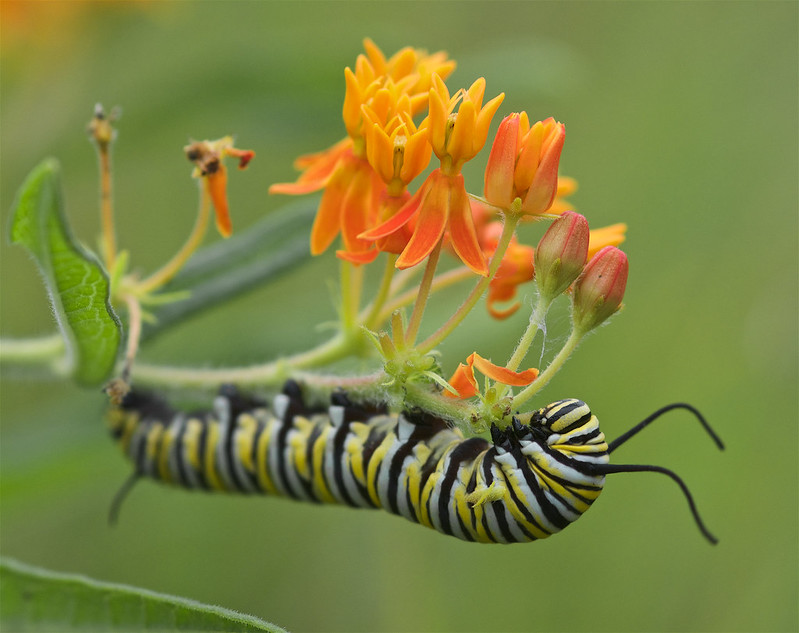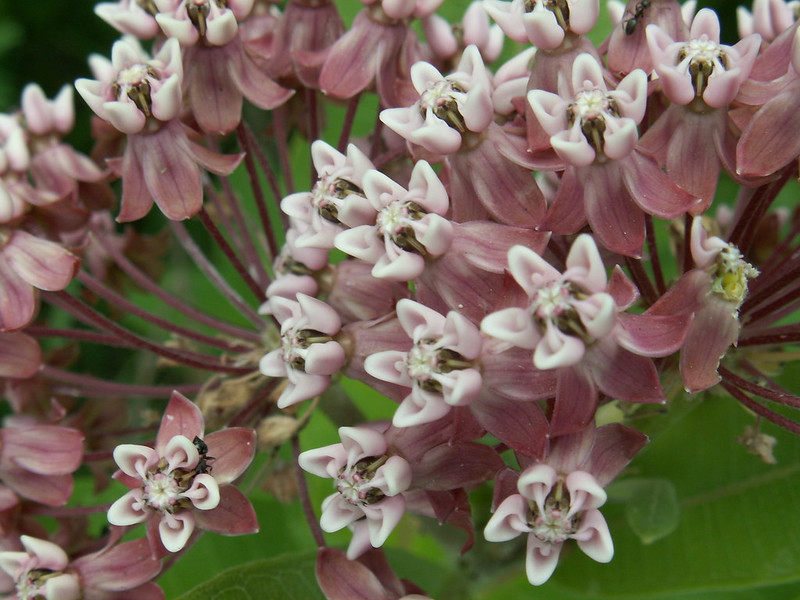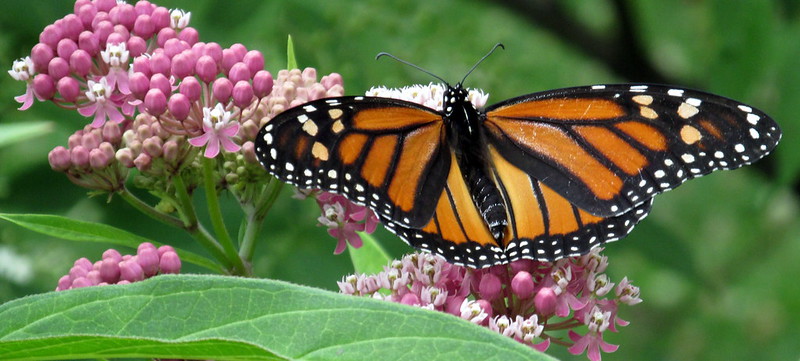Monarchs & Milkweed: The Tale of Two Declining Species
With its bright orange wing color and thick black outline, it’s hard to miss a monarch butterfly when it flutters by. The monarch butterfly, a busy pollinator, is a welcome sign of its annual migration in late summer. Unfortunately, the eastern monarch butterfly populations continue to decline thanks to climate change, habitat fragmentation, and pesticide use.
Monarch butterflies are more than a pretty sight; they play a huge role in ecosystem functions. The eastern monarch population typically spends late summer to earlier fall pollinating in the northeast. When the temperature drops, the butterflies migrate to forests in Mexico. During their journey back north, monarchs will lay anywhere between 200-500 eggs. While this number may seem high, we must consider that most monarchs have a lifespan of only a few weeks. It’s critical that we provide a safe habitat of the surviving eastern monarch butterflies.
But how does milkweed tie into all of this?
Milkweed is a perennial plant that monarch caterpillars depend on to survive. Like the monarch species, this plant species is on the decline. Researchers from the National Wildlife Federation predict that if everyone adds a little milkweed to their gardens, we will see an increase in monarchs shortly thereafter. But be careful when handling milkweed. Milkweed contains poisonous chemicals to humans and animals that consume it or come in contact with its sap. The monarch caterpillar, however, has evolved to withstand its toxicity. In fact, the toxic chemicals the caterpillars consume act as a defense mechanism to deter predators.

Monarch Caterpillar on Milkweed (Asclepias tuberosa).
Don’t let milkweed scare you though! As long as you take the proper precautions when handling milkweed you will not have an issue. These precautions include, wearing gloves, or covering your skin, washing your hands after handling, and making sure you, and children especially, can differentiate milkweed from other plants. Luckily, Milkweed has some unique identifiers. From June to August Milkweed produces dome-like clusters of little flowers with 5 petals, typically peeled back. Surrounded by the petals, you’ll also see a pod of seeds covered by another 5 hoods. By the fall, Milkweed will begin to release their seeds which get carried by the wind.

Milkweed with Petals Peeling Back
So, will you add some milkweed to your garden to help protect our monarch butterflies?
Check out Milkweed for eastern US for some tips!
–
By Miranda Gonzales, Long Island Pine Barrens Society
Sources:
https://biologicaldiversity.org/
https://medium.com/usfws/spreading-milkweed-not-myths-5df8c480912d



